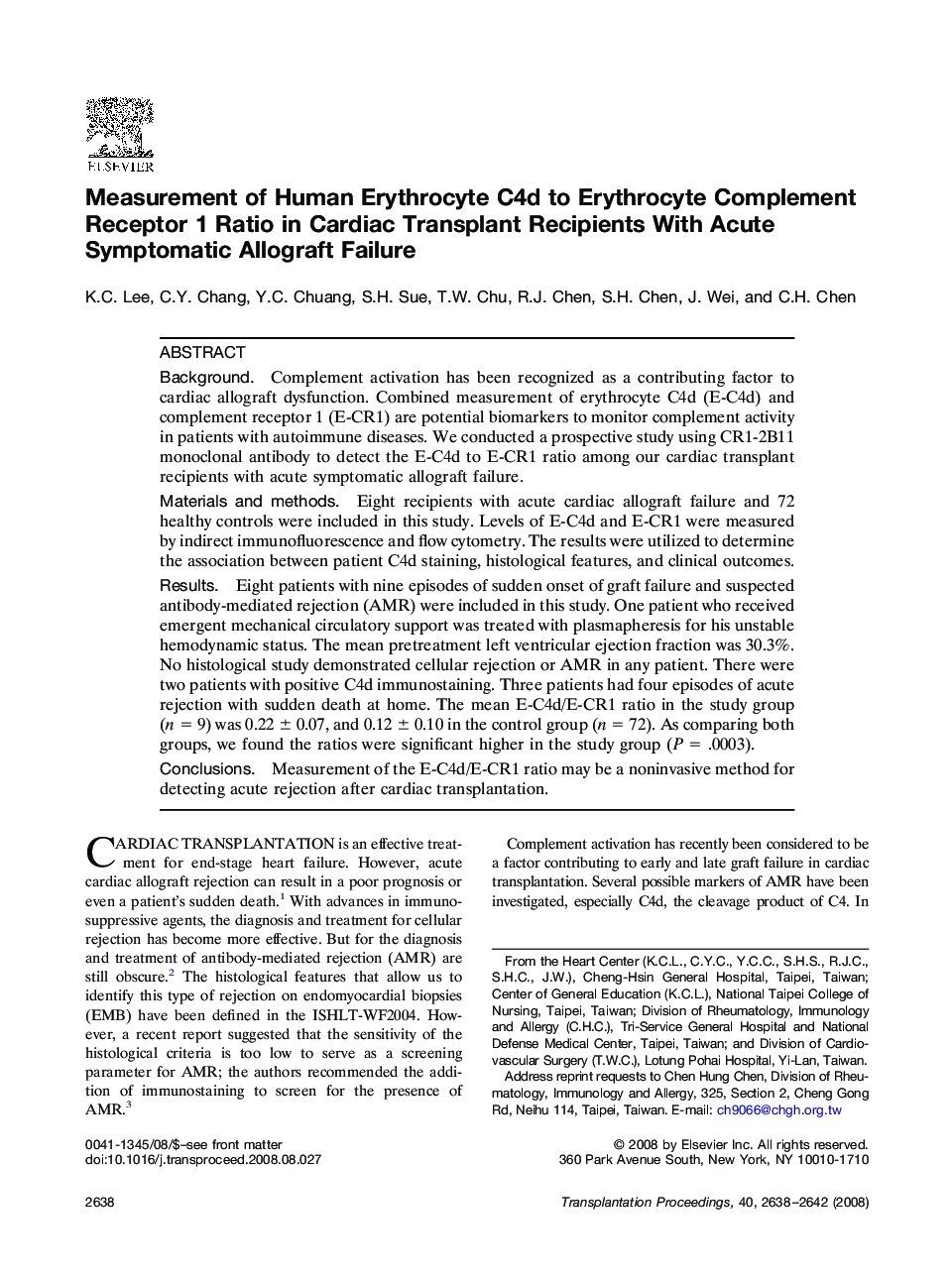| Article ID | Journal | Published Year | Pages | File Type |
|---|---|---|---|---|
| 4262022 | Transplantation Proceedings | 2008 | 5 Pages |
BackgroundComplement activation has been recognized as a contributing factor to cardiac allograft dysfunction. Combined measurement of erythrocyte C4d (E-C4d) and complement receptor 1 (E-CR1) are potential biomarkers to monitor complement activity in patients with autoimmune diseases. We conducted a prospective study using CR1-2B11 monoclonal antibody to detect the E-C4d to E-CR1 ratio among our cardiac transplant recipients with acute symptomatic allograft failure.Materials and methodsEight recipients with acute cardiac allograft failure and 72 healthy controls were included in this study. Levels of E-C4d and E-CR1 were measured by indirect immunofluorescence and flow cytometry. The results were utilized to determine the association between patient C4d staining, histological features, and clinical outcomes.ResultsEight patients with nine episodes of sudden onset of graft failure and suspected antibody-mediated rejection (AMR) were included in this study. One patient who received emergent mechanical circulatory support was treated with plasmapheresis for his unstable hemodynamic status. The mean pretreatment left ventricular ejection fraction was 30.3%. No histological study demonstrated cellular rejection or AMR in any patient. There were two patients with positive C4d immunostaining. Three patients had four episodes of acute rejection with sudden death at home. The mean E-C4d/E-CR1 ratio in the study group (n = 9) was 0.22 ± 0.07, and 0.12 ± 0.10 in the control group (n = 72). As comparing both groups, we found the ratios were significant higher in the study group (P = .0003).ConclusionsMeasurement of the E-C4d/E-CR1 ratio may be a noninvasive method for detecting acute rejection after cardiac transplantation.
